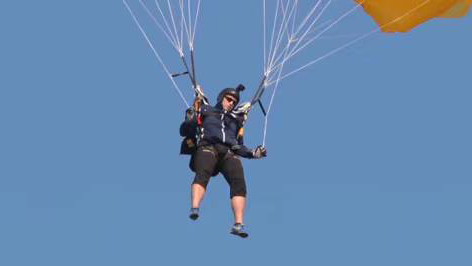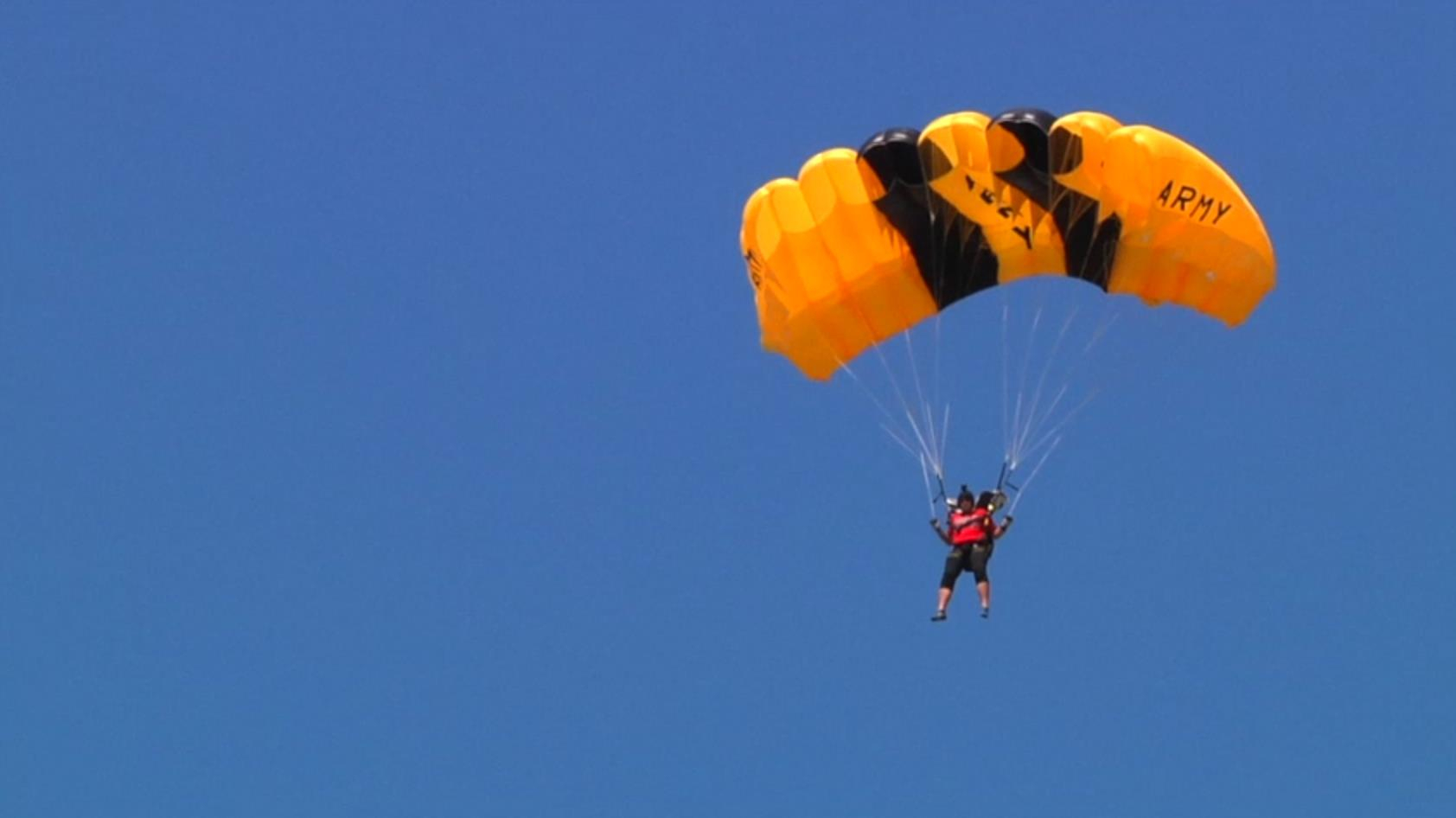02:13

If there is one sport at Military World Games that terrifies people, it's probably parachuting. Athletes fall 1,000 meters through the sky and landing on a small yellow dot with a diameter of two centimeters. The sport requires near-perfect accuracy, which means training will inevitably come with many failures.
Born in Connecticut, Luke Olk joined the army in 2011. Two years later he became a member of the Golden Knights, the nickname for the U.S. military parachuting team. At first, he was doing demonstrations and public air shows mostly. But it wasn't until he started real parachute training did he become hooked to the sensation of free-falling.
"At my first jump I was petrified as most people are because jumping out of a plane wasn't normal but the second I left that plane I felt free. This is when I realize l like skydiving and this is what I wanna do," says Olk.
Luke says the key lies in focus. You need to stay calm and smooth, focusing on the basics. And he says the feeling of hitting that dot is hard to describe. "It just feels awesome."
A sport that has many military applications. Parachuting is one of the fastest ways to deliver military personnel, equipment and other crucial supplies. This makes precision landing an essential skill on the battlefield.
In fact, the mission of Golden Knights is to train other U.S. military units on parachuting, helping them to get better and proficient.

Luke Olk, parachuter from the USA team. /CGTN Photo
Luke Olk, parachuter from the USA team. /CGTN Photo
"To be that accurate you gotta learn how to fly a parachute, you gotta learn how to be calm when you have that adrenaline go when you get close to the ground. You also have to train foot eye coordination because you are landing on a one dot with your heels," says Luke.
The training of the sport is nothing but intense. Parachuters like Luke do 10 to 12 jumps a day, repeating the same maneuver over and over again – from the aircraft to the ground.
U.S. team leader Karen Morrison says athletes on her team in average jumps 10,000 time a year. "The more you do it correctly the better you are," says Morrison.
Morrison used to compete professionally in this sport. But not anymore. Now her role is to arrange logistical support so that athletes can focus on competition.
She says the toughest challenge for athletes is to be able to forget: forget about a bad jump so that every jump is new.
"You have to be dedicated to stick through the hardships, the failures to get back up and keep going and keep trying," says the U.S. team leader.
On that note, Olk agrees that the biggest challenge of the sport is keeping failures out of your own head. When you have a bad jump or not getting the score you want, you need to be able to forget that jump.”
Finally I asked Olk: what does it feel like to be flying a thousand meters above the ground?
"Free as a bird. There is only one rule up there that's gravity…" said Olk.